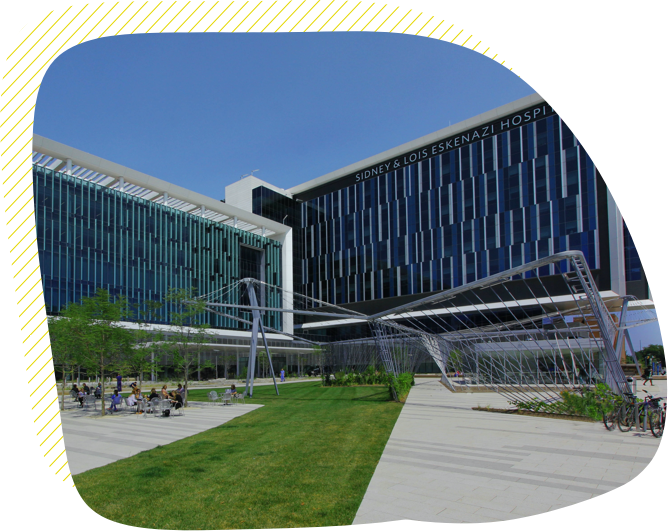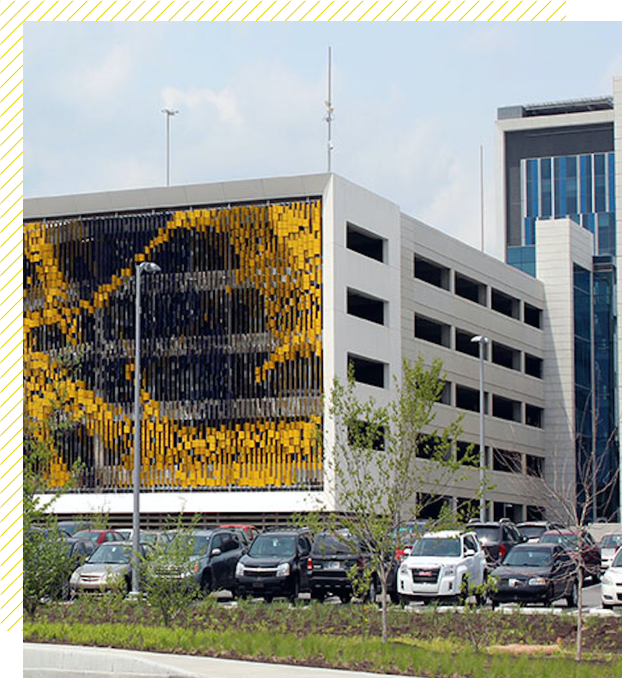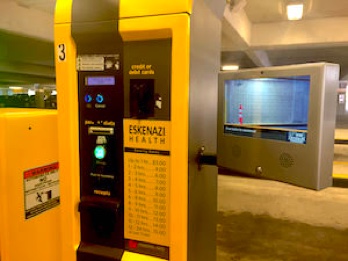
Goals & Objectives
Throughout the design and construction of the new hospital, Eskenazi’s leadership set a standard to be best-in-class for every touch point, including their parking garage, to deliver a quality patient experience.
Problem #1: Automation creates a loss of human interaction
“We had made the decision to shift from cashiered tellers to automated equipment so we could achieve significant cost savings,” says Lee Ann Blue, Chief Nursing Officer and EVP of Patient Care Services at Eskenazi. That decision replaced the first and last human interaction with a machine.
The team asked themselves how they could maintain the efficiencies of automated PARCS equipment and still provide hands-on support to patients and guests who require a higher degree of service. The team recognized the gap of standard audio-only intercoms, “The problem is that discussing a problem on an audio intercom is impersonal. It lacks empathy.”
For Eskenazi, it was unacceptable to provide excellent patient experiences in the hospital, but set lower expectations for their garage. “We needed a way to bring the human touch into our parking facility, because no one likes talking to an intercom,” said Blue.
“The problem is that discussing a problem on an audio intercom is impersonal. It lacks empathy.”

Lee Ann Blue
Parker’s video service gave Eskenazi the ability to eliminate the cost of cashiers while still providing an experience that lived up to the higher standard of care. “Two-way video on our parking equipment creates an instant face-to-face conversation. It’s an easy upgrade from the old-school intercoms other facilities have.”

Problem #2: A stressful garage experience results in lower satisfaction
Stress is a prime factor in dealing with a visit to the hospital. The last thing patients want is a problem getting in or out of the garage. “Parking is the first and last opportunity we have to interact with our guests,” says Blue. “Every touch point matters – and a face-to-face conversation is the most cost-effective way to turn a negative situation into something positive.”
“Having been in the role of daily visitor to a hospitalized loved one, I can corroborate the importance of an empathic human voice when things aren’t working as desired,” says Lisa Harris, CEO of Eskenazi. “Anything we can do to relieve stress is important.”
When visitors press the “help” button, Parker’s face-to-face platform, supported by a 24/7/365 call center, ensures guests are assisted quickly and with empathy, so a confusing moment doesn’t escalate into something worse.
Problem #3: We need a consistent brand experience
“At Eskenazi Health, we put a lot of thought into every possible way to improve the patient experience,” said Blue. The organization went through a brand redesign as part of the launch of the new hospital and the hospital invested significantly in training to keep the brand and patient experience consistent. “We want our patients and visitors to feel comfortable and at ease when they visit our facility. Most importantly, we want to see smiling faces here at Eskenazi Health in every interaction.”
Audio intercoms fail to meet Eskenazi’s brand experience. It’s impossible to deliver a smile through a box, and worse, the tone of a voice can be misinterpreted, whereas a face-to-face conversation is clear and understood.

Eskenazi has Parker installed on Federal PARCS equipment.
Eskenazi uses Parker’s call center to handle incoming calls, with two-way video. The team is specially trained to handle calls according to Eskenazi’s brand standards. “Our call center team answers every call and assists each guest as though there were on Eskenazi’s staff,” said Scott Gould, Parker’s SVP of Business Development. “From the perspective of the visitor, a member of the Eskenazi staff is there to ensure their needs are being met by someone who cares.”
It’s a branded experienced from start to finish, the parking facility visitor never knows that Parker is assisting.
“The introduction of Parker into our parking facilities helps our patients see those smiling faces when they need assistance,” says Blue, “providing for much-needed empathy in a parking environment.” The end result is a branded, high-quality interaction that meets Eskenazi’s high standards for patient care.
